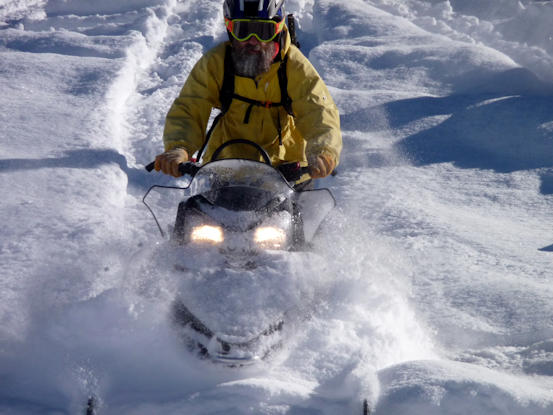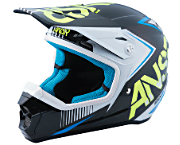
© 2019 by Bill Uhl
Safety Trainer and Expert Witness
Have you ever thought about what you would do if you were unexpectedly stranded while snowmobiling?
Imagine being 15 miles from your vehicle, in two foot of powder snow on a four-foot base, in a dead zone for cell service when the weather unexpectedly changed. What if you found yourself in the middle of a whiteout with no way to determine direction and the temperature was zero or below. All of a sudden, your snowmobile wouldn’t run. What would you do? Below are many ideas to consider, ideas that could save your life.
- First, you’d try to fix your snowmobile. If that was out of the question and you narrowed the problem down to an electrical problem because your machine had no spark, it would be time to shift to a different plan to survive the night.
- If you couldn’t walk out and you didn’t tell anyone where you were going or when you might be back, no one would be looking for you for quite some time. Since you made a major mistake, tonight’s rescue would be up to you.
- Your #1 survival tool will be to stay calm.
- It’s starting to get late. How will you survive a night out?
- How will you be comfortable during a night in the cold?
- Take an inventory of what you have in your survival pack. Since there are probably items you always carry but never use, most likely, you don’t even know if some of what you’re carrying is still good.
- Test your survival gear as you take an inventory. Set aside anything that has spoiled over time.
- Now that you know what you have, what is it that you still need to fill in the gaps in your survival supplies?
- What type of shelter can you construct with the natural supplies around you?
- Let’s say you have a snowdrift large enough to dig a snow cave in on the wayward side of a very small ridge fairly close to your location. Let’s also assume you don’t have a shovel.
- Take one of your skis off your snowmobile. Remove all the hardware and use it to dig with. Another option includes using one of your side panels as a shovel or another part of your sled as a digging tool.
- When the cave is dug out, place a vent in the roof for air circulation.
- Decide how to furnish the inside of your cave.
- If there are no pine boughs to line the insides of the cave to keep you off the snow, take the seat off of your sled. Place it inside the cave to sit or sleep on.
- Use the hood from your snowmobile as the door to your shelter.
- If your sled has removable side panels, use them to keep your feet off the snow while you sleep. Don’t forget to use your other ski to help keep your body off the snow.
- The mud / snow flap can be used as make-shift bear paw snowshoes or to help keep you off the snow. If you have no cord to use to tie the snowshoes onto your feet, pull out your starter cord / rope and cut it off the starter mechanism where it mounts to the engine. The snowshoes will increase your flotation on the snow.
- Some clutch covers can be used to melt snow in. This is important because you’ll need to drink water. It’s absolutely essential that you stay hydrated, for many reasons, including clear thinking. Of course, you’ll need to clean the cover the best that you can with what you have available before you use it in this way.
- Some heat shields can also be formed into a cup to melt snow.
- The snowmobile’s windshield can be used to collect any moisture created from your heat source as you warm up the inside of the cave or use it to keep the rest of your gear off the snow and as dry as possible. Be creative. Think outside of the box! Always ask yourself, “What is it that I need to survive?” and “What do I have that might work for that purpose?”
- Let’s say there is no wood to burn, so the only heat source you’ll have is what you make from your survival pack and from your snowmobile.
- Consider what would happen if you take some cloth and place it into any type of container that will not burn. Then add some of the oil out of your injection system to burn as a way to raise the temperature in the snow cave while adding some light so you can see. Some clutch covers work well for this purpose.
- A good thing for your survival pack is cotton balls soaked in Vaseline Petroleum Jelly. They burn well and last a surprisingly long time. Of course, if you packed them in some type of tin that won’t burn and has a lip, you’d be able to quench the fire when necessary.
- Another good thing for your pack is pitch wood from a rotting log. Since this type of wood doesn’t absorb or retain water, you’ll be thrilled that it will also burn in wet conditions.
- Do you have water-proof and wind-proof matches? How about a butane lighter and a magnesium fire starter striker kit? It’s always a good idea to have three ways to start a fire.
- If you need to carry some gas to your survival cave site, use the breather hose off your snowmobile gas tank as a gas container. Pull a couple of bolts off the sled to use to plug the ends of the hose.
- If you need to travel some distance to your survival site, use the hood off your snowmobile as a sled to haul all of your supplies. If you need a rope to pull the sled with, pull your starter rope all the way out and cut it off again at the motor. Most starter ropes have a nice handle to hold on to.
- You can remove the oil tank and take the oil with you as fuel. Again, use bolts from the sled to plug the oil lines. Your snowmobile will have other hoses that can be used to haul gas or oil in.
- In a pinch, you can burn the drive belt off your sled and your trusted spare. I say that because you won’t be needing them anytime soon since you concluded you have no way to fix the problem with your snowmobile.
- Right now, the most important thing is to survive the night so you can start your long walk out to find help. Since your snowmobile track will have set up overnight, walking will not be as difficult. Do remember that the shortest way out most likely was not the way you arrived at your current location. This means you’ll have to weigh the difference between walking in your home-made snow shoes in the powder snow or walking 3 times the distance in your snowmobile tracks set up from the day before. Since you’ll be tired and probably somewhat disgruntled about the distance you my have to walk, you may have to remind yourself that playing around is one of biggest reasons we go out into deep powder snow for a ride.
All in all, your snowmobile will have many things you can use to survive a night out in the bitter cold. Add a thoughtfully-prepared, trustworthy survival pack to the mix and you have a good chance of surviving an unexpected night out. Even if you only look at what’s in your pack in depth once or twice a year, you’ll still be carrying everything you need to survive when coupled with your snowmobile parts when you go for a ride.
PREVENT FUTURE PROBLEMS AND STAY SAFE AS AN OFF-HIGHWAY VEHICLE (OHV) OPERATOR
At the beginning of each season of snowmobiling, I encourage you to go through your survival pack. Know how to use everything in it. Make sure every item is in good working order. Add to or subtract things you can’t use or don’t need until you come up with a very compact set of survival tools.
We both know you always want to live to ride another day. That’s why I teach my students to “pack smart”, as well as know how to build and maintain snow bridges that can keep you safe. I encourage you to also gain safety training about pre-ride inspections. Whether you’re operating a UTV, ATV, snowmobile or motorcycle dirt bike, pre-ride inspections can prevent accidents, injuries and unexpected nights out in the cold.
Since I’m a safety trainer and a Court-Qualified Expert Witness regarding ATVs, UTVs (side-by-sides), snowmobiles and motorcycle dirt bikes, I will take this opportunity to remind you to prevent accidents and injuries and stay safe as a user of ROVs. Sign up for safety training with a qualified safety trainer. Even if you’ve been riding your ATV, UTV, snowmobile or motorcycle for years, you’ll be amazed at how much safer you’ll feel with new safety tips.
NOTE: This article is not intended to be all inclusive. It is designed to provide a foundation for the reader to learn from.
Bill Uhl is a Safety Trainer and Court-Qualified Expert Witness for cases involving all-terrain vehicles (ATVs), utility vehicles (UTVs / side by sides, SxS), ROVs, OHVs, snowmobiles, motorcycle dirt bikes, dual sport bikes, off-road bicycles trails and guided tours. Uhl has completed over 75 cases while serving as an Expert Witness, working for both plaintiffs and defendants, including providing trial testimony. Click here now for more information about Mr. Uhl.


